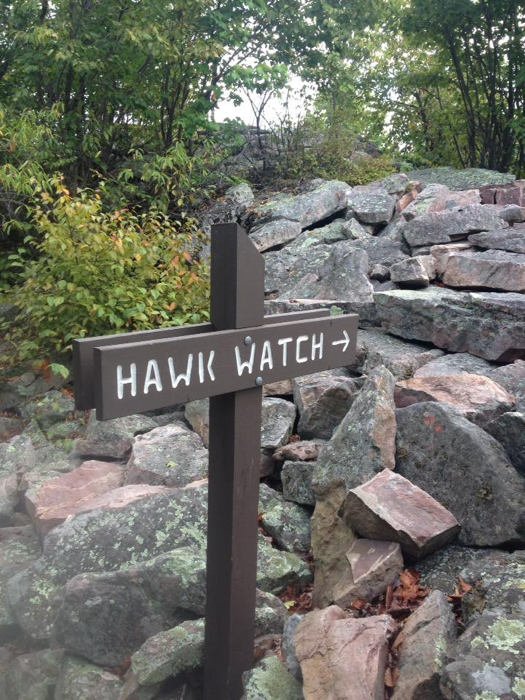Hawk Watch.
That’s an app, right?
Wrong.
Hawk watching is actually a citizen science program where individuals spend their day outdoors and their eyes fixed on the sky. The point of this program is to get a count of migrating bird species and the number of individuals in each species.

Citizen science projects like this help us to understand more about the world around us. Knowing more about where birds go during the winter could help with conservation efforts of those birds in the future. Some things that we’ve learned already is that birds don’t all migrate at the same time — the birds that travel the farthest seem to leave first. Mid-September is when the Broad-winged Hawk migration begins — a long journey to Central America.

I was fortunate enough in one day to see a lot of Broad-wing Hawks — 198 to be exact — migrating over Stone Mountain. A group of Broad-winged Hawks is called a “kettle,” and these hawks seem to be fairly tolerant about migrating as a group; the largest kettle that passed by while I was at the Stone Mountain Hawk Watch consisted of 42 birds. Other birds migrating that day included five Bald Eagles, three Sharp-shinned Hawks, and two Ospreys.

Unlike their title, hawkwatchers don’t just count hawks or birds of prey migrating by; other birds and some insects are also en-route to a warmer climate for winter. Many small birds such as warblers and hummingbirds are tallied in the daily counts. Monarch Butterflies are similarly migrating south and are the only insect (that I’m aware of) that are counted.
Central Pennsylvania is one of the best places to witness the hawk migration because the ridges combined with the thermals puts hawk-watchers sometimes at eye-level with migrating birds that are traveling right over the mountains.

So, what is it like to hawk watch? The experience is incredible. On Stone Mountain, it’s like you’re sitting in the clouds. There are valleys on either side of the ridge (where there is civilization), but it’s like hawk-watchers are one with the clouds and hawks flying overhead. What I got mainly out of being on a few trips was the feeling of serenity and an inner calm of being so high on the mountain and so removed from society. I also felt excitement from having the opportunity to be part of something bigger than myself.
The first large kettle of hawks that flew over gave me a rush of excitement, but also a bit of anxiety (I was nervous I wouldn’t be able to count all of them). As they flew by, it felt like we were sending them off and saying our last farewells, wishing them well on their long journey to Central America. I felt sad to see them fly away, but it was exceptional to be able to witness such an awesome event that I otherwise would have missed.

If you have the chance, go visit a hawk watch site this fall, and go on some bird walks. Staff from Shaver’s Creek Environmental Center have a “shift” at the Stone Mountain Hawk Watch site every Friday, and volunteers are at the site most every day of the week. If you are interested in hawk watching, check out the Hawk Migration Association of North America (HMANA) website to find a Hawk Watch location near you! Bird counts from Stone Mountain are updated every day on the website, so be sure to check out the daily counts!
There are so many natural phenomenons occurring all around us, and autumn is one of the most magical times of the year to witness some of these events, such as the yearly migration. Get out and explore the world this fall, and never stop discovering.

Photos by Abby Hileman unless otherwise noted.
